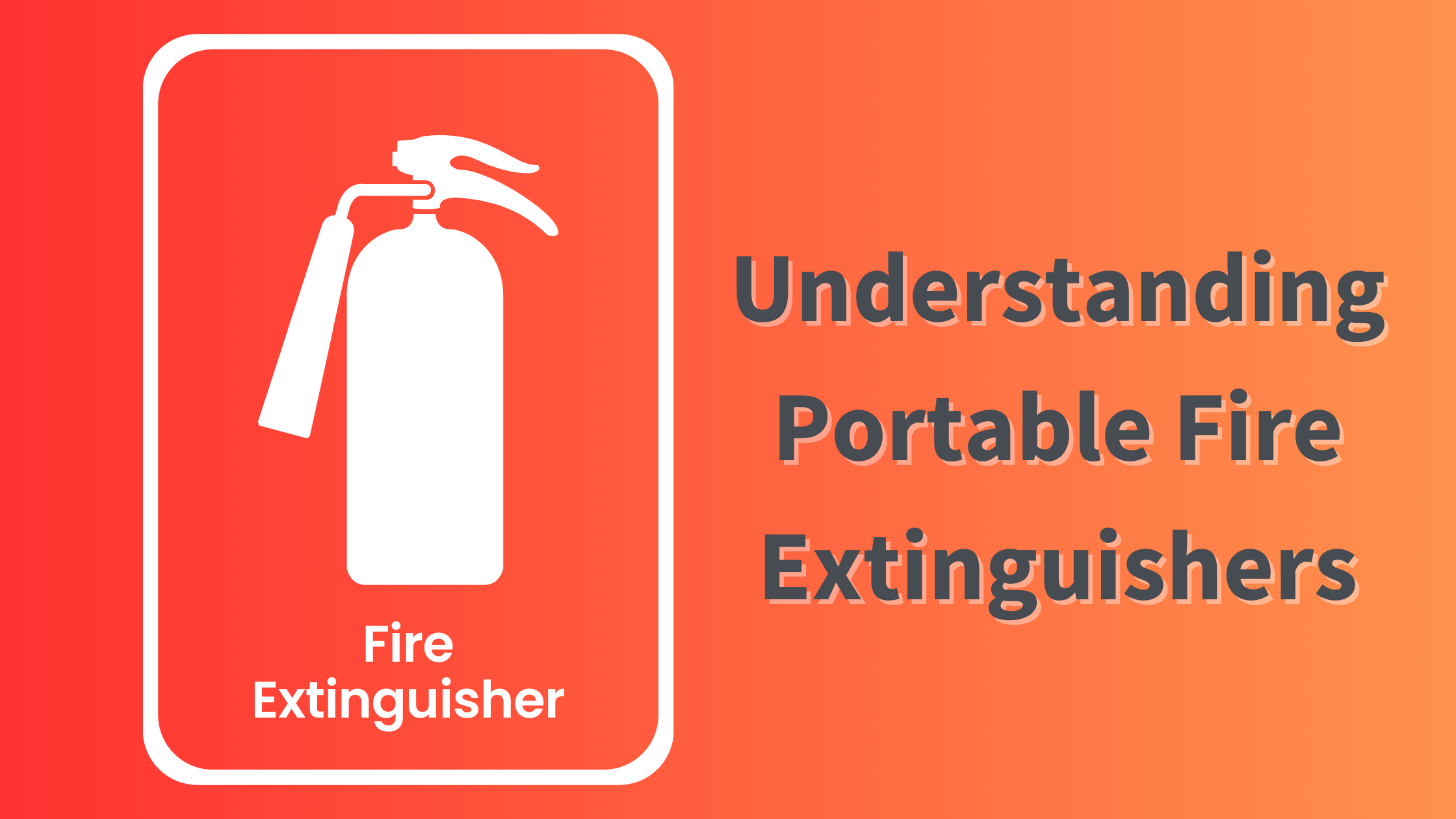Understanding Portable Fire Extinguishers

A Comprehensive Guide
Whether at home, in the car, boat, work or school, you’ll find fire extinguishers ubiquitous with good reason. According to the National Fire Protection Agency, code 10, the maximum travel distance to an extinguisher in a commercial building is 75 feet, emphasizing their crucial role. Knowing how to select the appropriate extinguisher is critical.
Principals of Selection
Selecting the right fire extinguisher involves considering various factors:
- Type of Potential Fire Hazard: Identify the nature of potential fire hazards, ranging from ordinary combustible materials (Class A) to combustible metals (Class D).
- Severity of Potential Fire Hazard: Assess the intensity of the potential fire hazard, as different fires require different approaches for effective extinguishing.
- Environmental Conditions: Consider the environmental conditions surrounding the potential fire hazard, as certain extinguishing agents may be more effective in specific situations.
- Effectiveness of Extinguisher: Evaluate the extinguisher's effectiveness on the identified potential fire hazard, ensuring it is well-suited for the task.
- Training and Physical Capabilities: Take into account the training and physical capabilities of available personnel who may need to operate the extinguisher.
- Upkeep and Maintenance Requirements: Regular maintenance and adherence to upkeep requirements are crucial to ensure the extinguisher's reliability when needed.
Extinguisher Classifications
Fire extinguishers are classified by types of fires that can be extinguished by fuel sources. These classifications include Class A, B, C, D and K. Below are the classifications as defined by NFPA based on the fuel type:
Class A:
Ordinary combustible materials, such as wood, cloth, paper, rubber and many plastics. They burn with an ember and leave an ash. Extinguish by cooling the fuel to a temperature that is below the ignition temp. Water and other extinguishing agents are effective.
Class B:
Flammable liquids (burn at room temperature) and combustible liquids (require heat to ignite). Petroleum greases, tars, oils, oil-based paints, solvents, lacquers, alcohols, and flammable gases. High fire hazard; water may not extinguish. Extinguish by creating a barrier between the fuel and the oxygen, such as layer of foam.
Class C:
Fuels that would be A or B except that they involve energized electrical equipment. Special techniques and agents required to extinguish, most commonly carbon dioxide or dry chemical agents. Use of water is very dangerous because water conducts electricity.
Class D:
Combustible metals, such as magnesium, titanium, zirconium, sodium, lithium and potassium. Most cars contain numerous such metals. Because of extremely high flame temperatures, water can break down into hydrogen and oxygen, enhancing burning or exploding. Extinguish with special powders based on sodium chloride or other salts; also clean dry sand.
Class K:
Fires in cooking appliances that involve combustible cooking media (vegetable or animal oils and fats).
Source: NFPA Reporter’s Guide: All about fire
Operation of Fire Extinguishers
PASS is a common acronym used by fire fighters and professionals to educate others on how to operate portable fire extinguisher cabinets. The illustration below shows the 4 phases:
P – Pull the Pin
A – Aim at the Base of Fire
S – Squeeze the Handle
S – Sweep the base of the fire
This simple yet effective guideline ensures the proper use of portable fire extinguishers, empowering individuals to act swiftly and effectively in the face of a fire emergency. Stay informed, stay safe!
Nystrom understands the codes and complexities with fire extinguishers and fire safety products. To find out how Nystrom can assist on your next project, please visit our website.



![shutterstock_296152232-[Converted]](https://blog.nystrom.com/hs-fs/hubfs/Imported_Blog_Media/shutterstock_296152232-converted.jpg?width=600&height=765&name=shutterstock_296152232-converted.jpg)

